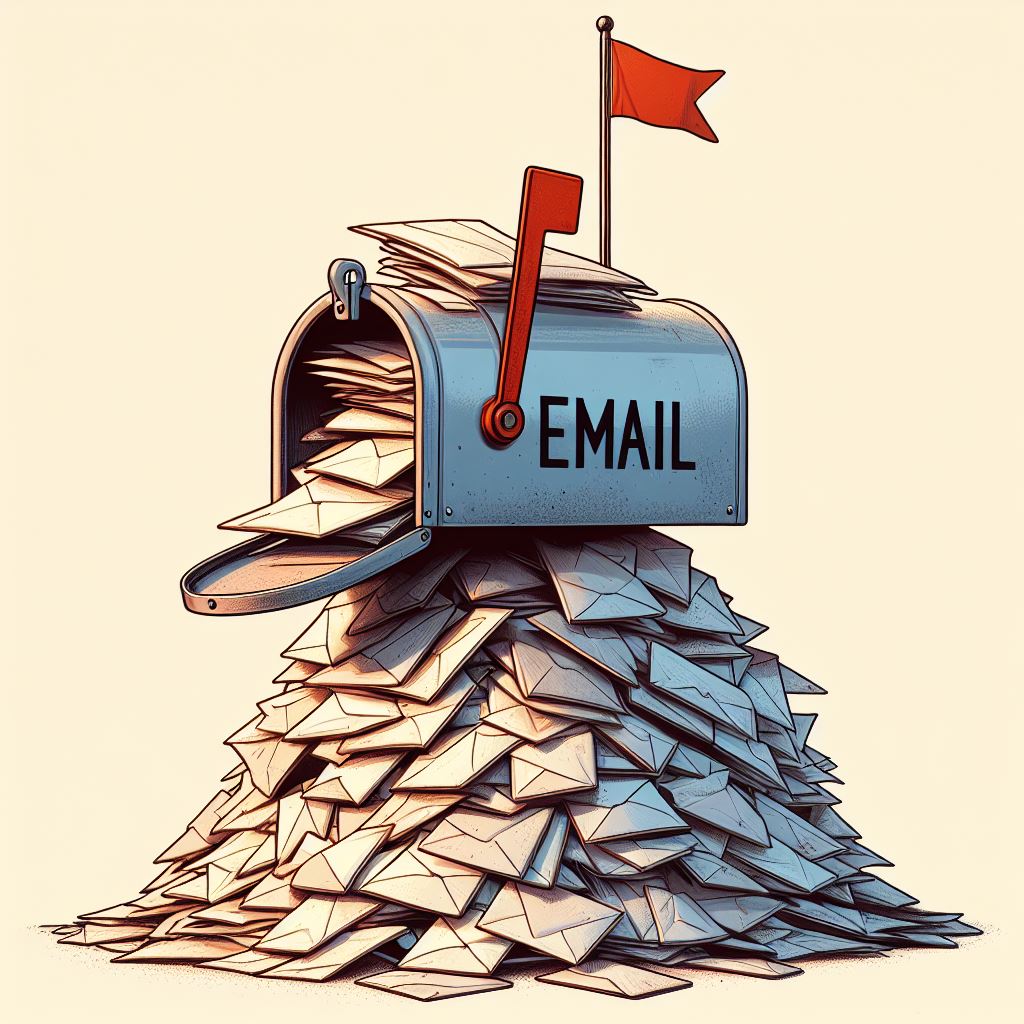Email is one of the oldest and most widely used forms of digital communication. It has been around for 50 years and shows no signs of slowing down. According to recent data, worldwide, the number of emails sent and received per day in 2023 is 347.3 billion, marking a 4.3% increase from the previous year’s figure of 333.2 billion. This figure is set to increase further by a similar margin in 2024, reaching 361.6 billion.
The Problems with Email:
Email is reliable, but it is not a collaboration tool. It passes information on, rather than bringing it together. Email was originally designed to send information between computers, share files, and communicate non-urgent messages. It was never meant to be the primary means of communicating critical, time-sensitive, or complex information. Email has many advantages, such as being low-bandwidth, universal, and easy to use. However, it also poses many challenges, especially for teams that need to work together effectively.
- Inefficiency: In an email thread, especially among multiple participants, it is easy to get lost in the CCs and BCCs, to respond to the wrong person, or completely miss important information. Email also tends to create silos of information, where only some people have access to relevant data or documents.
- Lost time: A typical office worker can receive hundreds of emails per day. A handful are important, while the others might be anything from advertising to spam. Sorting through emails to find and respond to the relevant pieces takes up time that could be spent on other tasks. According to a study by McKinsey, the average worker spends 28% of their workweek on email.
- Lower productivity: An employee checking email is not much different from a rat pushing a lever for cheese. According to Psychology Today, email notifications provide a hit of dopamine, the brain chemical responsible for pleasure. But they also lead to a state of heightened arousal, which can make it difficult to get much done. Email can also distract workers from their main goals and cause them to switch tasks frequently, reducing their efficiency and the quality of their work.
- Delayed responses: Email is not a real-time communication tool. You have to wait for the recipient to open, read, and reply to your message, which can take hours or even days. This can slow down your workflow and decision-making process, especially when you need quick feedback or confirmation.
- Low engagement: Email is a one-way communication tool. You send a message and hope that the recipient will read it and act on it. However, there is no guarantee that your message will get the attention it deserves, or that the recipient will respond in a timely manner. This can reduce your engagement and collaboration with your team members, clients, or stakeholders.
The Alternatives to Email:
Fortunately, email is not the only option for communication in the modern workplace. There are many other tools and platforms that can help you communicate more effectively and efficiently with your team members, clients, or stakeholders. Some of the most popular alternatives are:
- Microsoft Teams: Microsoft Teams is a cloud-based collaboration platform that integrates with Microsoft Office 365 and other Microsoft products. It allows you to create teams and channels for different projects, topics, or departments, and communicate with your team members via chat, voice, or video calls. You can also share files, documents, calendars, notes, tasks, polls, surveys, and more within each team or channel. Microsoft Teams also supports bots and workflows that can automate tasks and processes for you.
- Slack: Slack is another cloud-based collaboration platform that allows you to create channels for different projects, topics, or departments, and communicate with your team members via chat, voice, or video calls. You can also share files, documents, links, images, videos, emojis, GIFs, and more within each channel. Slack also supports bots and workflows that can integrate with other apps and services that you use for your work.
- Other options: There are many other communication tools and platforms that you can use depending on your needs and preferences. Some examples are Zoom, Google Meet, Skype, Discord, Basecamp, etc.
The Benefits of Using Alternatives to Email:
Using alternatives to email can bring many benefits to your work communication and collaboration.
- Faster communication: You can communicate with your team members in real-time via chat or voice/video calls without waiting for email responses. This can speed up your workflow and decision-making process.
- More context: You can communicate with your team members in a more informal and personal tone using emojis, GIFs, or stickers to express emotions, intentions, or nuances. You can also refer to previous messages or conversations to provide more context or information.
- Higher engagement: You can communicate with your team members in a more interactive and collaborative way using polls, surveys, quizzes, games, or challenges to get feedback, opinions, or ideas. You can also celebrate achievements or milestones with your team members using badges, rewards, or shout-outs.
- Better organization: You can organize your communication and collaboration into teams and channels based on projects, topics, or departments. This can help you keep track of your work and avoid cluttering your inbox with irrelevant or outdated messages.
Email is not obsolete and is still a powerful tool when used correctly. However, email alone is not enough to meet the needs of today’s dynamic and collaborative workplaces. You need to use other tools and platforms that can help you communicate more effectively and efficiently with your team members, clients, or stakeholders. By using alternatives to email, you can improve your communication speed, context, engagement, and organization, and ultimately enhance your work performance and satisfaction.


